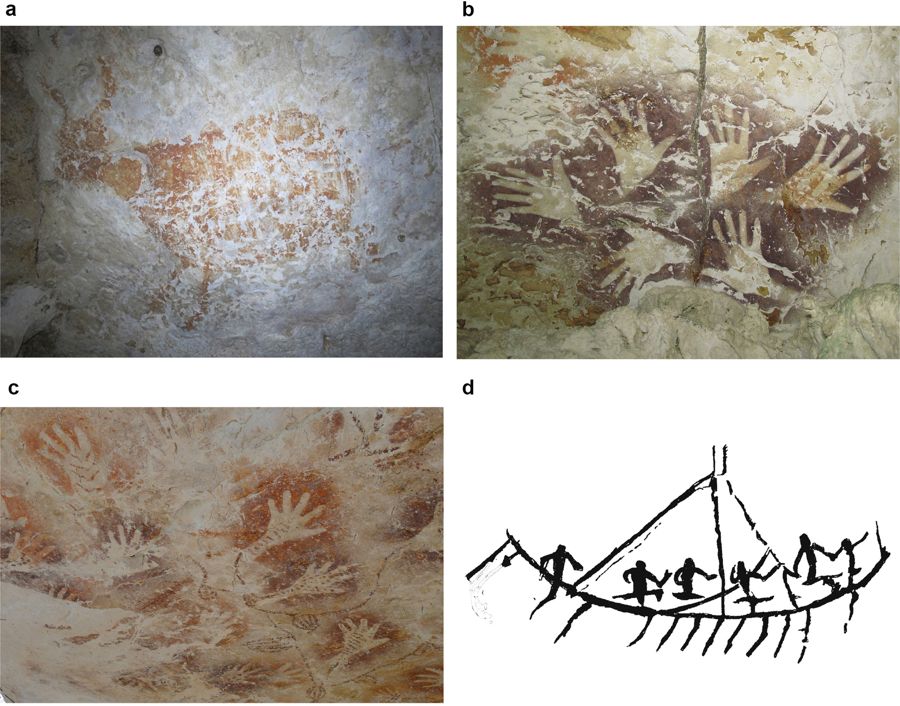Researchers believe they have discovered the oldest figurative cave art in the world, at least so far. Their discovery could change what we know about the first art made by our ancestors.
A team of archeologists and led by Maxime Aubert from Griffith University in Australia studied a cave in Borneo which contains figurative art, or drawings of real things such as an animal or person. According to a study published in the journal Nature, they believe the animal paintings they found date back at least 40,000 years.
“The oldest cave art image we dated is a large painting of an unidentified animal, probably a species of wild cattle still found in the jungles of Borneo — this has a minimum age of around 40,000 years and is now the earliest known figurative artwork,” Aubert said in a statement.
Archeologists found the art in the limestone caves of Borneo’s East Kalimantan. At the location, there are thousands of rock art images of animals, humans, boats and much more. However, scientists weren’t sure about the age of those paintings. To date them, scientists used uranium-series dating of calcium carbonate samples from one painting in particular. The team believes they have successfully determined the age of the painting. They also dated two hand stencils, which they believe to be 37, 200 years old and up to 51,800 years old. Based on their results, the scientists believe the rock art was made roughly 52,000 to 40,000 years ago.
The archeologists said they also found evidence of a major culture change which took place about 20,000 years ago. The rare paintings started appearing around that time, they explained. Interestingly, scientists believe Earth was in an ice age during that period.
In their paper, the researchers said the rock art likely appeared in Borneo around the same time they believe modern humans arrived in Europe, which they estimate at about 45,000 to 43,000 years ago. It would mean similar figurative cave art appeared in the extreme west and extreme east of Eurasia around the same time.
“Whether this is a coincidence, the result of cultural convergence in widely separated regions, large-scale migrations of a distinct Eurasian population or another cause remains unknown,” they noted.
The team’s findings suggest the oldest figurative cave art wasn’t found in Europe, like it was previously thought. Instead, they now believe ice age artists from Southeast Asia were crucial to the beginning of the ice age.
“Who the ice age artists of Borneo were and what happened to them is a mystery,” Pindi Setiawan from the Bandung Institute of Technology (ITB) in Indonesia said in a statement.





